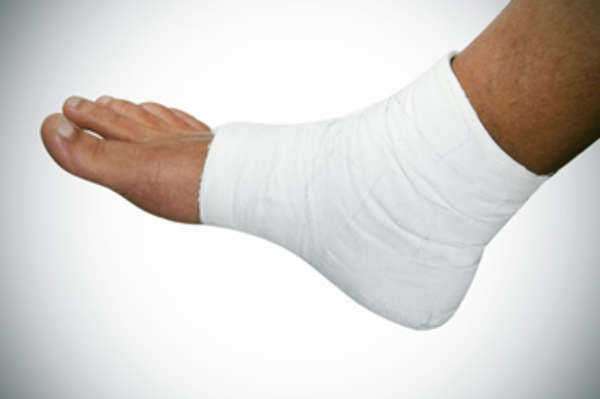
Teflon: Is It Safe?
Teflon, the trademarked brand name for the chemical compound polytetrafluoroethylene (PTFE), has become a common household item in recent years. From non-stick cooking pans and bakeware to water-resistant clothing and even dental floss, Teflon has been a useful addition to modern life. However, concerns have been raised regarding the safety of Teflon and its potential health risks to humans. In this article, we will explore the history of Teflon, its properties, how it works, its potential dangers, and the latest information about its safety.
The History of Teflon
Teflon was first discovered by chemist Dr. Roy J. Plunkett in 1938 while conducting experiments with a new refrigerant at the DuPont Company. He discovered that a gas stored in a cylinder had transformed into a white, waxy solid material. This solid material, PTFE, turned out to be highly heat-resistant and have an extremely low coefficient of friction, making it a valuable and unique material for many different applications.
During World War II, Teflon was put to use in various military applications, including as insulation for electrical equipment and as a protective coating for machinery. After the war, DuPont began exploring commercial uses for Teflon, and in 1961, the first non-stick cookware made with Teflon was introduced to the market.
Teflon Properties
Teflon is a synthetic fluoropolymer that is both hydrophobic (water-repellent) and oleophobic (oil-repellent). It is highly heat-resistant and has one of the lowest coefficients of friction of any solid material, which means that it is very slippery and is not easily scratched or damaged. Additionally, Teflon is resistant to most chemicals, making it an ideal material for use in situations where corrosion or chemical attack might occur.
Teflon’s Unique Binding Properties
A unique property of Teflon is the way in which it bonds with other materials. When Teflon is applied to a surface, it bonds with that surface at a molecular level. This means that the Teflon becomes an integral part of the surface, not just a coating on top. The result is a very durable and long-lasting coating that is difficult to remove.
Teflon in the Home
Teflon has become a common material used in many household applications, primarily due to its non-stick properties. Teflon cooking pans and bakeware have been popular with cooks for many years because they make cooking and clean-up easier. Teflon is also used in many other household items, such as irons, hair straighteners, and dental floss.
Concerns About Teflon
Despite its versatility and convenience, Teflon has come under scrutiny in recent years due to concerns about its safety. One of the primary concerns is the use of perfluorooctanoic acid (PFOA), a chemical used in the manufacturing process of Teflon and other fluoropolymers. PFOA has been found in the bloodstream of most people and is considered a potential cancer-causing agent. In 2005, DuPont reached a settlement with the United States Environmental Protection Agency (EPA) to reduce the release of PFOA from its plants by 95% by 2010 and to stop using PFOA in its manufacturing process by 2015. Since then, other manufacturers of Teflon and other fluoropolymers have followed suit.
Another concern regarding Teflon is the potential for the material to release toxic fumes when heated. At high temperatures, Teflon can begin to break down, and the release of toxic gases can occur. These gases can cause flu-like symptoms in humans and can be fatal to birds. While the likelihood of this happening in a typical home kitchen is low, it is still important to take precautions when using Teflon cookware and to never heat an empty Teflon pan.
Safety Precautions When Using Teflon
While the potential dangers of Teflon may be concerning, it is important to note that there are steps that can be taken to minimize any risks. One of the most important things to do is to never heat an empty Teflon pan. When a Teflon pan is heated without any food in it, it can reach temperatures high enough to release toxic fumes. Additionally, it is important to never use metal utensils on Teflon cookware, as they can scratch the surface and remove the non-stick coating.
Another important safety tip when using Teflon is to use low to medium heat settings when cooking with Teflon pans. High heat settings can cause Teflon to break down, which can release toxic fumes. It is also important to ensure that there is proper ventilation in the kitchen when cooking with Teflon pans or other Teflon-coated items.
Latest Information on Teflon Safety
In recent years, the safety of Teflon has been reviewed by various governmental agencies, including the EPA and the Food and Drug Administration (FDA). According to the EPA, there is no evidence that Teflon poses a significant risk to human health or the environment when used as intended. The FDA has also reviewed Teflon and other fluoropolymers and has found them to be safe for use in food contact applications.
Conclusion
Teflon continues to be a popular material for use in many household products, despite its potential health risks. While concerns about PFOA and the release of toxic fumes when heated have been raised, it is important to take precautions when using Teflon products to minimize any potential risks. By following the recommended safety precautions, including never heating an empty Teflon pan and using low to medium heat settings, you can continue to enjoy the convenience of Teflon in your home safely and with confidence.
What is Teflon?
Teflon is a synthetic polymer consisting of Flourine and Carbon. Its gneric term is Polytetrafluorethlyene. DuPont is the primary producer of the synthetic and Teflon is the name associated with that product. The uses for Teflon are far reaching. It is noted for its non-stick and non-reactive nature which lends itself in the production of non-stick cookware, containers, pipework and as a lubricant.
Safety
Although Teflon is considered to be a safe material it is only as safe as the person using it. Teflon has a recommended temperature usage at around 200 degrees Fahrenheit. At 300 degrees Fahrenheit the chemical begins to break down and has been known to give off enough toxins at that temperature to kill birds. At levels reaching higher than this it has been known to cause illness in humans. A non-stick, Teflon coated pan coated with oil can easily reach temperatures at or above 250 degrees Fahrenheit and when the same pan is exposed to heat on a stove it without the use of cooking oil the temperatures can exceed that leading to flue like symptoms in humans.
Recent studies have shown that the risks associated with Teflon pans is even more far reaching. Where DuPont has claimed that a conventional stovetop will not exceed 660 degrees Fahrenheit recent experiments have indicated that a Teflon pan will reach 736 degrees in less than 4 minutes. This is more than enough to reach toxicity levels that pose a threat to humans. Another concern is the breakdown of the Teflon over time. Teflon is in almost everything and even the packaging of popcorn contains some Teflon. This has resulted in 95% of Americans having some chemical associated with Teflon in their blood.
Government Regulation
The EPA has issued warnings about the use of Teflon and its risk of posing developmental and reproductive in humans. Chemicals associated with the breakdown of Teflon during heating include liver, pancreatic, testicular and mammary gland tumors, thyroid abnormalities, immune system disorders and reproductive problems including infertility and birth defects. The EPA has requested that Teflon be taken completely off the market by 2015.
Case Law
In 2005 Dupont settled with the federal government for $313 million over its concealment of harmful conditions associated with Teflon and the chemicals associated with its breakdown and toxicity. The word is still out on Teflon litigation. In 2009 a U.S. District Court in Iowa dismissed a $5 billion suit against Dupont for failure to warn and imposing unnecessary health risks to the public. The suit was dismissed due to the failure of the court to grant the 22 plaintiffs a class action status. A case based on Teflon’s ability to break down and release toxins at normal cooking levels has yet to be heard on the merits.























